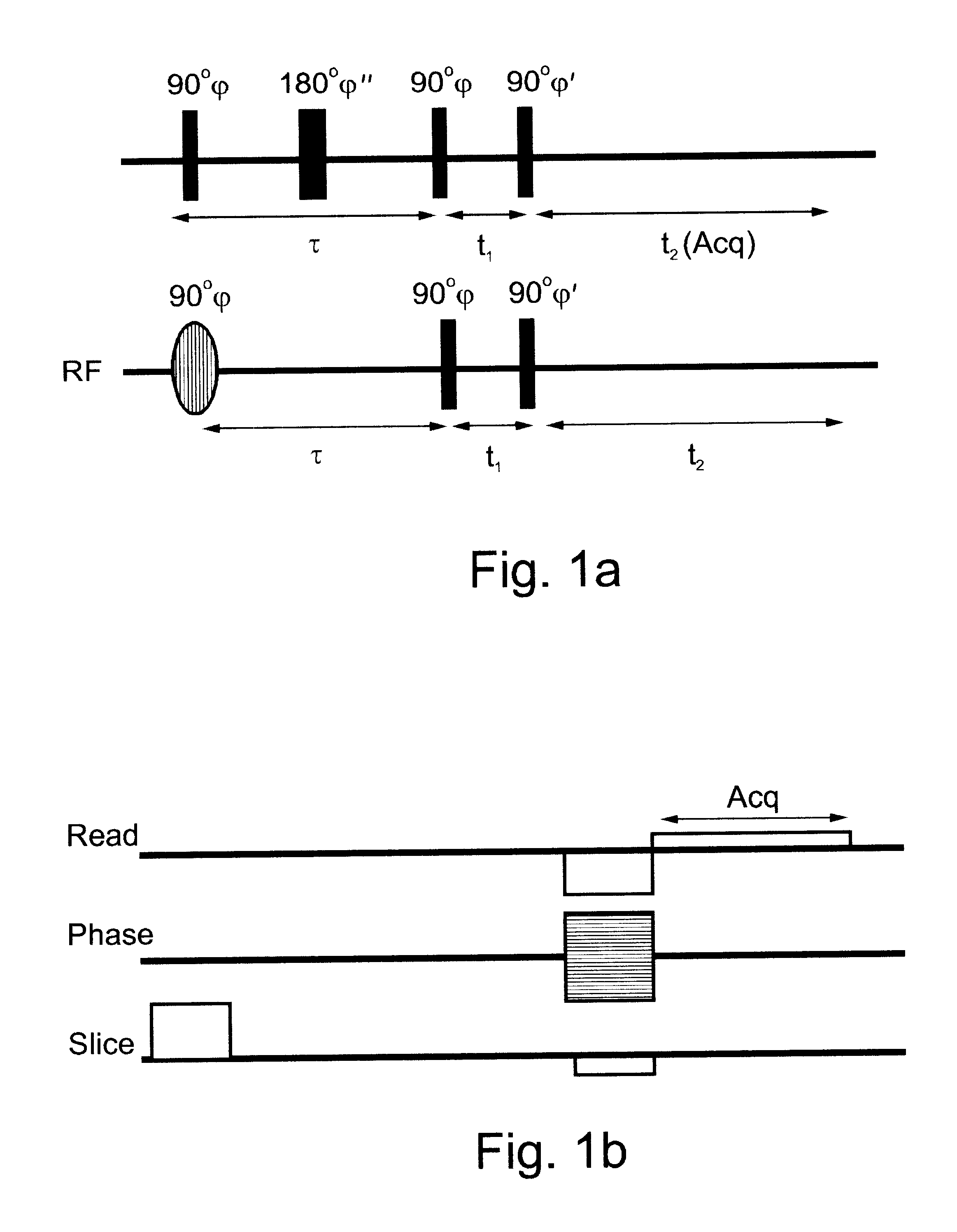Method of magnetic resonance imaging
a magnetic resonance imaging and imaging method technology, applied in the field of magnetic resonance imaging, can solve the problems of high time consumption, significant contrast loss, and not yet optimal for diagnostic purposes
- Summary
- Abstract
- Description
- Claims
- Application Information
AI Technical Summary
Benefits of technology
Problems solved by technology
Method used
Image
Examples
example 1
Background
The rupture of the Achilles tendon is a common incident in daily and sports activities. Rehabilitation lasts at least several months and, in some cases, more than a year. Unfortunately, there is a lack of an objective scale for the tendon's chronic phase of healing, since standard MRI techniques and ultrasonography give very little information [T. M. Haygood, Magnetic resonance imaging of the musculoskeletal system: 7, The Ankle. Clin. Orthop. 336, 318-336 (1997); P. T. Karjalainen, J. Ahovuo, H. K. Pihlajamaki, K. Soila, H. J. Aronen, Postoperative MR imaging and ultrasonography of surgically repaired Achilles tendon ruptures. Acta Radiol. 37, 639-646 (1996)]. Protocols of rehabilitation have been made from clinical scoring that consists of walking ability, heel raising, stiffness, pain, weakness, etc. [O. Amer, A. Lindholm, Subcutaneous rupture of the Achilles tendon: A study of 92 cases. Acta Chir. Scand. (Suppl.) 239, 1-51 (1959); S. A. Solveborn, A. Moberg, Immediate ...
example 2
Background
Connective tissues, such as ligaments, tendons and cartilage appear in standard magnetic resonance (MR) images with low signal-to-noise (S / N) ratio (SNR) due to the water short T.sub.2 relaxation times. Images performed with short echo time (TE), result in a significant loss of contrast. In addition to the need to enhance the nuclear magnetic resonance (NMR) signal of connective tissues, it is also important to increase the contrast between the different compartments within a specific tissue and between adjacent tissues. Methods developed to meet these requirements include heavily T.sup.1 weighted imaging [R. J. Scheck, A. Romagnolo, R. Hierner, T. Pfluger, K. Wilhelm, K. Hahn, The carpal ligaments in MR arthrography of the wrist: correlation with standard MRI and wrist arthroscopy, J. Magn. Reson. Imag. 1999; 9:468-474] magnetization transfer [T. D. Scholz, R. F. Hyot, J. R. DeLeonardis, T. L. Ceckler, R. S. Balaban, Water-macrornolecular proton magnetization transfer in ...
example 3
Background
Ankle injuries are among the most common pathologies encountered in radiologic practice. These include not only injured bones and ligaments but also traumatized tendons. Magnetic resonance imaging is becoming the modality of choice for imaging joints due to its superior tissue contrast and multiplanar capabilities [R. H. Daffnier, Ankle trauma, Radiologic Clinics of North America 28, 395-421 (1990), J. C. Tsai, M. B. Zlatkin, Magnetic resonance imaging of the shoulder, Radiologic Clinics of North America 28, 279-291 (1990); Turek's Orthopedics principles and their application, Edited by S. L. Weinstein, J. A. Buckwalter, Fifth Ed., J. B, Lippincott Company, Philadelphia, p. 78-101 (1994)]. However, the full potential of MRI has not yet been reached. Its main disadvantage in the diagnosis of tendon and ligament injuries is the short T.sub.2 relaxation constants of ordered tissues. When conventional MR imaging methods are used, the low signal to noise ratio (SNR) encountered...
PUM
 Login to View More
Login to View More Abstract
Description
Claims
Application Information
 Login to View More
Login to View More - R&D
- Intellectual Property
- Life Sciences
- Materials
- Tech Scout
- Unparalleled Data Quality
- Higher Quality Content
- 60% Fewer Hallucinations
Browse by: Latest US Patents, China's latest patents, Technical Efficacy Thesaurus, Application Domain, Technology Topic, Popular Technical Reports.
© 2025 PatSnap. All rights reserved.Legal|Privacy policy|Modern Slavery Act Transparency Statement|Sitemap|About US| Contact US: help@patsnap.com


